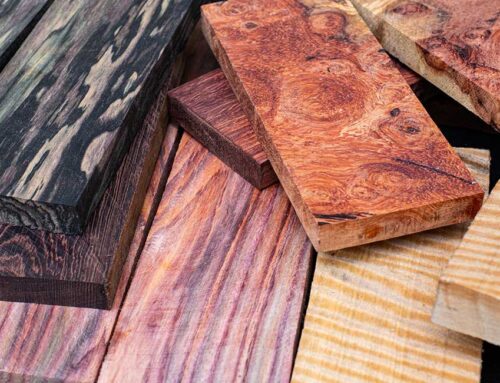The creation of a piece of wooden furniture is a journey that begins long before a craftsman selects a tool or sketches a design. It starts in the forest, with the selection of the right tree, and follows a meticulous process of milling, drying, and crafting that combines science, art, and a deep respect for the natural world. This blog post explores the fascinating journey from tree to table, providing insights into each step of the process that results in the creation of furniture that can last for generations.
SELECTING THE RIGHT TIMBER
The first step in the journey is selecting the right timber, a critical decision that impacts not just the quality of the final piece, but also the sustainability of our forests. Woodworkers often choose timber based on species, grain patterns, and the specific requirements of the project at hand. Hardwoods like oak, maple, and walnut are popular for their durability and beauty, while softwoods like pine and cedar are chosen for their workability and lighter weight.
Sustainable harvesting practices are essential during this phase. Selecting trees from responsibly managed forests ensures that the impact on the environment is minimized and that forests remain vibrant ecosystems for generations to come.
MILLING THE TIMBER
Once the right trees have been selected, they are cut down and transported to a sawmill for milling, a process that transforms logs into usable lumber. Milling involves cutting the logs into boards of various thicknesses, widths, and lengths. This step requires precision and expertise, as the way a log is cut can influence the strength, appearance, and grain pattern of the wood.
The milling process can produce lumber with different types of cuts, such as plain-sawn, quarter-sawn, and rift-sawn, each providing a unique appearance and qualities that can enhance the final piece of furniture.
KILN DRYING THE WOOD
After milling, the wood must be dried to remove excess moisture, a critical step to ensure the stability and durability of the final product. Kiln drying is the most common method used, as it allows for precise control over the drying process, reducing the risk of warping, shrinking, or splitting.
During kiln drying, lumber is placed in a large oven and subjected to controlled levels of temperature and humidity. This process can take from several days to weeks, depending on the thickness of the wood and the desired final moisture content. Properly dried wood is essential for quality furniture making, ensuring that the finished piece will retain its shape and beauty over time.
CRAFTING THE FURNITURE
With the wood selected, milled, and dried, the final and most transformative phase begins: crafting the furniture. This stage is where the vision of the designer and the skill of the craftsman converge. It involves selecting the right pieces of wood for different parts of the furniture, cutting to precise measurements, and joining the pieces together using techniques that have been refined over centuries.
Craftsmanship in furniture making is not just about technical skills; it’s also about understanding the material. A deep appreciation for wood’s unique properties can inspire innovative designs that highlight the natural beauty of the grain, color, and texture of the timber.
The finishing touches, including sanding, staining, and sealing, protect the wood and enhance its natural beauty, preparing it to take its place in homes, offices, and spaces where it will be used and cherished.
The journey from tree to table is a testament to the art and science of woodworking. It combines sustainable practices, technical precision, and creative vision to transform a simple log into a piece of furniture that is not just functional but also a work of art. This process reflects a deep respect for the natural world and a commitment to craftsmanship that ensures the legacy of quality furniture will continue for generations to come. Through understanding this journey, we gain a greater appreciation for each piece of wooden furniture we encounter, knowing the care, skill, and history embedded in its creation.

























